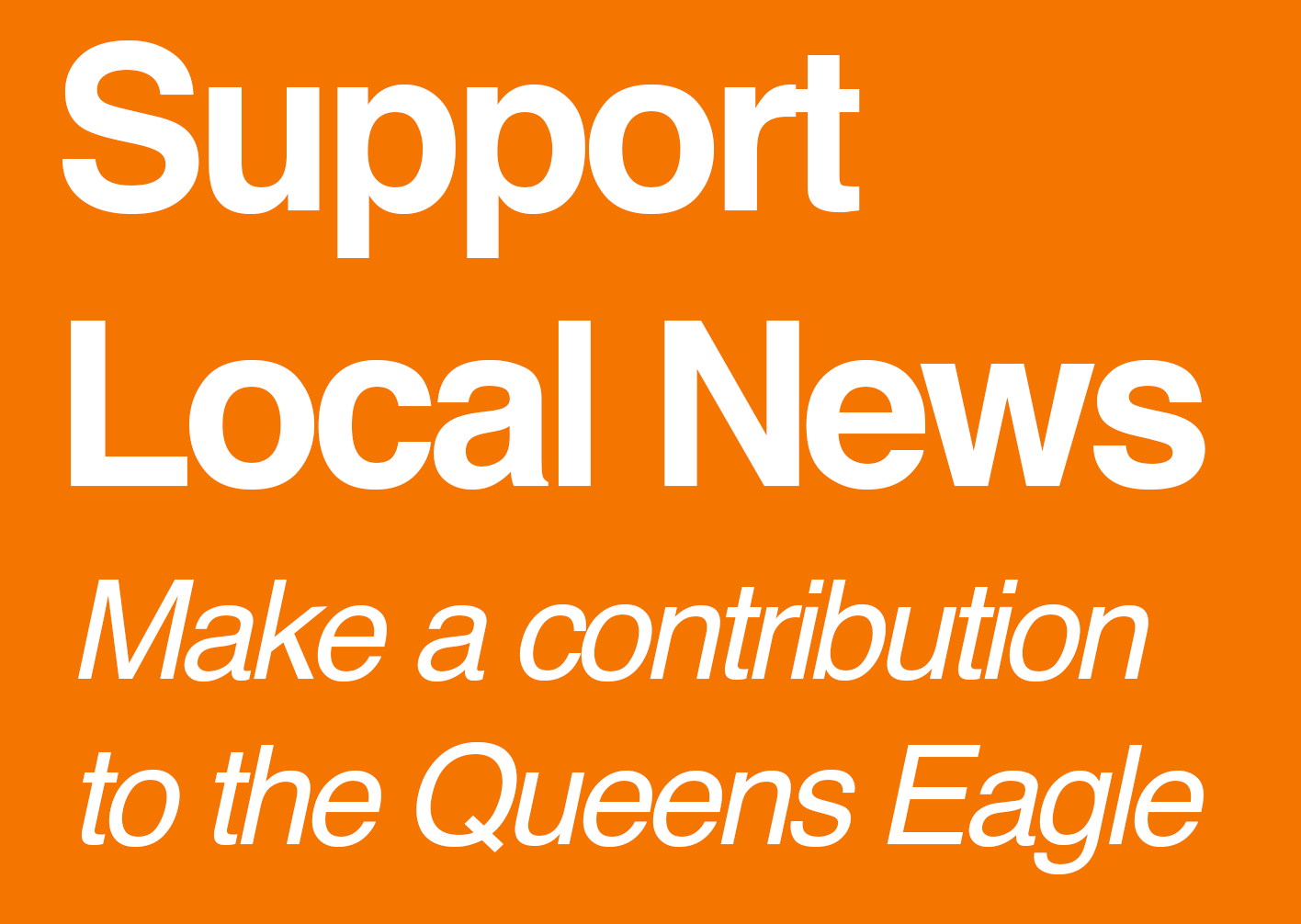Officials still trying to plug Queens’ flooding without federal support
/Queens officials including Borough President Donovan Richards and Councilmember Shekar Krishnan, as well locals are calling for the federal government to restore funding that would have helped address the borough’s flooding issues. Eagle photo by Ryan Schwach
By Ryan Schwach
Four years ago, then-President Joe Biden made a trip to Queens to pledge the federal government’s support in addressing flooding issues in the borough, where nearly a dozen people died in flooded basements during Hurricane Ida.
On Monday, officials took to the same street in East Elmhurst where Biden once stood to call on the Trump administration to restore funding meant to support the over 39,000 Queens homes at serious risk of flooding even during just a moderate rain storm.
Queens Borough President Donovan Richards joined a group of local Queens residents to call on the federal government to again support efforts to mitigate flooding in the borough. The demand coincides with the release of a report from Richards’ office that found that around 4.5 percent of Queens’ households are at risk of flooding even when rain is limited.
“We need the federal government as a partner, not an impediment,” Richards said on Monday, speaking on an East Elmhurst block notorious for flooding issues. “To Donald Trump, let's put politics aside for once, and let's save lives.”
Last month, the Trump administration announced the slashing of $325 million in FEMA funding from the city. Around $150 million of the funding – which was allotted during the first Trump administration in 2020 – was intended to address flooding in the World’s Borough.
The funding was meant to be spent on a trio cloudburst hub projects, which absorb, store and transfer stormwater to minimize flooding from heavy rain, in the Kissena Corridor, Corona East and East Elmhurst.
The funding was to be used to build sustainable, rain proof infrastructure, drainage pipes and rain gardens that aim to ease the stress put on Queens’ outdated sewer systems during storms.
“Work was about to get started, and it's now utterly compromised by these funding cuts,” said City Councilmember Shekar Krishnan. “This is an issue about flooding in our neighborhood and about protecting our homes and communities from the worst impacts of climate change.”
The officials say that flooding is not a partisan issue, and called for funding to be restored.
“We're here today to tell the Trump administration to stop playing politics with the lives of our neighbors,” said Richards. “This funding must be restored immediately. Floods don't care if you're a Democrat or Republican, and neither should our government when it comes to mitigating floods.”
“How many more people have to die in a super storm before they see the light?” he added.
With or without the cloudburst projects, flooding has become an increasingly ubiquitous issue across the borough.
“The fact of the matter is our aging infrastructure, from our sewers, our drains to our streets, they are creating massive problems,” said Krishnan. “They are destabilizing homes, causing extensive damage that we have seen first hand.”
In the past, flooding issues were centered around Queens’ more low-lying coastal communities. But with increasing water levels and strains on sewage infrastructure becoming more frequent, other areas are facing struggles.
“When you look at where flooding is happening now, it's like Whac-A-Mole,” said Richards. “We just don't know anymore.”
In the last few years – marked by Hurricane Ida which killed 11 in Queens – other neighborhoods like Hollis and East Elmhurst are seeing more flooding issues.
“Now you're starting to see flooding is happening in places that we never imagined it would happen, and that's due to, obviously, the rising water table and climate change,” said Richards. “We have to now be strategic in how we address hot spots like this.”
Queens’ 39,491 homes at risk of flooding is second in the city, only behind Manhattan.
And the issue could get worse, too. Predicted sea level numbers show that by 2050, a moderate rainstorm could put nearly 100,000 households in Queens in danger of flooding – around 11 percent of the borough.
Dinu Ahmed, an East Elmhurst local, has long struggled with flooding on her block, which pools practically every time it rains.
“Flooding has continued to have devastating effects in our community,” she said. “We cannot afford to risk one more fatality.”
Flooding in East Elmhurst is a persistent issue for locals, who face problems nearly every time it rains. Eagle file photo courtesy of Dinu Ahmed
In January 2024, Ahmed spoke to the Eagle about the problems her and her neighbors face.
“Every single time it rains heavily, nobody in this neighborhood sleeps,” she said. “You see all the lights go on at 2 a.m. We're all looking at the street, it feels like post-traumatic stress, it's really difficult.”
She told the Eagle on Monday that conditions have not improved over a year later.
“We must prioritize the restoration of federal funding, and we need our city and state officials who have kept aside this issue, to keep sight of this issue and maintain the urgency and keep this pressure on,” she said. “Flooding did not begin with Hurricane Ida.”
While there has been some flood mitigation work done in her area by the city Department of Environmental Protection, more still needs to be done, the BP said.
Both in Elmhurst and in his new report, Richards highlighted other ongoing work being done to address Queens’ flooding issues, with or without the feds.
That includes a sewage system overhaul around Newtown Creek in Western Queens, which will include the construction of a 3-mile long tunnel to help with sewage overflow.
“We are making incredible progress to transform our borough into a global leader in clean, green energy, regardless of the headwinds we face from Washington,” Richards said.





